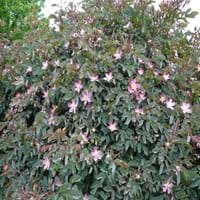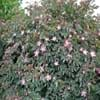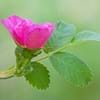Life Span
Perennial
Annual
Type
Flowering Plants
Grass
Origin
Central Europe, Polynesia, Southern Europe
South America, Micronesia, New Zealand
Types
Not Available
Not Available
Habitat
Dappled Shade, Sunny Edge, Woodland Garden
coastal environs, Grassland, Roadsides, Waste areas, waterways
USDA Hardiness Zone
10-15
7-11
AHS Heat Zone
12-10
11 - 7
Sunset Zone
H1, H2, 24
H1, 3a, 3b, 4, 5, 6, 7, 8, 9, 10, 11, 12, 13, 14, 15, 16, 17, 18, 19, 20, 21, 22, 23, 24
Habit
Arching/Fountain-shaped
Clump-Forming
Flower Color Modifier
Bicolor
Bicolor
Fruit Color
Red
Not Available
Leaf Color in Spring
Green, Dark Green
Green, Light Green, Dark Green
Leaf Color in Summer
Purplish Green
Light Green
Leaf Color in Fall
Copper
Green, Light Green, Dark Green
Leaf Color in Winter
Blue Green
Dark Green, Tan
Leaf Shape
Pinnate
Grass like
Plant Season
Spring, Summer, Fall, Winter
Spring, Summer, Fall, Winter
Sunlight
Full Sun, Partial Sun
Full Sun
Type of Soil
Loam, Sand
Loam
The pH of Soil
Acidic, Neutral
Acidic, Neutral
Soil Drainage
Average
Well drained
Bloom Time
Early Summer, Summer, Late Summer
Summer, Fall
Tolerances
Drought, Salt
Drought, Salt
Where to Plant?
Ground, Pot
Ground
How to Plant?
Seedlings, Stem Planting
Seedlings
Plant Maintenance
Medium
Medium
Watering Requirements
Requires a lot of watering, Requires regular watering
Average Water Needs
In Summer
Lots of watering
Lots of watering
In Spring
Moderate
Moderate
In Winter
Average Water
Average Water
Soil pH
Neutral, Slightly Acidic, Slightly Alkaline
Acidic, Neutral
Soil Type
Clay, Loam, Sand
Loam
Soil Drainage Capacity
Well drained
Well drained
Sun Exposure
Full Sun, Partial Sun
Full Sun
Pruning
cut main flower spike, Prune in spring, Remove dead leaves, Remove deadheads
Remove damaged leaves, Remove dead branches, Remove dead leaves
Fertilizers
5-10-10 fertilizer
All-Purpose Liquid Fertilizer
Pests and Diseases
Aphids, Black Spot, Japanese Beetles, Powdery mildew, Spider mites
Red blotch
Plant Tolerance
Wet Site
Drought
Flowers
Insignificant
Showy
Flower Petal Number
Single
Single
Foliage Texture
Bold
Fine
Foliage Sheen
Matte
Matte
Attracts
Bugs
Not Available
Allergy
Asthma, contact allergic dermatitis, Rhinoconjunctivitis
Itchiness
Aesthetic Uses
Borders, Bouquets, Showy Purposes
Showy Purposes
Beauty Benefits
good for lips, Improve skin tone, Moisturizing, Speed hair growth
Not Available
Edible Uses
Yes
Sometimes
Environmental Uses
Air purification
Air purification
Medicinal Uses
anti-inflammatory, Antiseptic, Asthma, Dehydration, Dermatitis, Eczema, Eye Problems, Fatigue, Gallbladder Diseases, Liver problems, Sore throat, Stomach aliments, Swelling, Ulcers, Urinary tract problems
Not Available
Part of Plant Used
Flowers
Flowers, Leaves
Other Uses
Can be made into a herbal tea, Cosmetics, Culinary use, Edible syrup, Making Sweet Scented Oil, Oil is used for aromatherapy, Used as essential oil, Used as Ornamental plant, Used for fragrance, Used for its medicinal properties
Animal Feed, Used as Ornamental plant
Used As Indoor Plant
Yes
No
Used As Outdoor Plant
Yes
Yes
Garden Design
Bedding Plant, Mixed Border
Cutflower, Dried Flower/Everlasting, Feature Plant, Foundation, Groundcover, Mixed Border, Screening / Wind Break
Botanical Name
Rosa glauca
CORTADERIA jubata
Common Name
redleaf rose, red-leaved rose
Purple Pampas Grass
In Hindi
red leaved rose
Purple pampas grass
In German
Rotblatt-Rose
Lila Pampasgras
In French
Rosa glauca
Pourpre herbe de pampa
In Spanish
Rosa glauca
hierba púrpura pampas
In Greek
Rosa glauca
Μωβ γρασίδι παμπάς
In Portuguese
Róża czerwonawa
grama roxa pampas
In Polish
Róża czerwonawa
Purpurowy trawa pampasów
In Latin
Rosa glauca
Purpura Pampas herba
Phylum
Magnoliophyta
Magnoliophyta
Class
Magnoliopsida
Liliopsida
Clade
Angiosperms, Eudicots, Rosids
Angiosperms, Commelinids, Monocots
Tribe
Not Available
Not Available
Subfamily
Rosoideae
Not Available
Number of Species
Not Available
Season and Care of Redleaf Rose and Purple Pampas Grass
Season and care of Redleaf Rose and Purple Pampas Grass is important to know. While considering everything about Redleaf Rose and Purple Pampas Grass Care, growing season is an essential factor. Redleaf Rose season is Spring, Summer, Fall and Winter and Purple Pampas Grass season is Spring, Summer, Fall and Winter. The type of soil for Redleaf Rose is Loam, Sand and for Purple Pampas Grass is Loam while the PH of soil for Redleaf Rose is Acidic, Neutral and for Purple Pampas Grass is Acidic, Neutral.
Redleaf Rose and Purple Pampas Grass Physical Information
Redleaf Rose and Purple Pampas Grass physical information is very important for comparison. Redleaf Rose height is 100.00 cm and width 90.00 cm whereas Purple Pampas Grass height is 90.00 cm and width 120.00 cm. The color specification of Redleaf Rose and Purple Pampas Grass are as follows:
Redleaf Rose flower color: Pink
Redleaf Rose leaf color: Green and Dark Green
Purple Pampas Grass flower color: Purple
- Purple Pampas Grass leaf color: Green, Light Green and Dark Green
Care of Redleaf Rose and Purple Pampas Grass
Care of Redleaf Rose and Purple Pampas Grass include pruning, fertilizers, watering etc. Redleaf Rose pruning is done cut main flower spike, Prune in spring, Remove dead leaves and Remove deadheads and Purple Pampas Grass pruning is done Remove damaged leaves, Remove dead branches and Remove dead leaves. In summer Redleaf Rose needs Lots of watering and in winter, it needs Average Water. Whereas, in summer Purple Pampas Grass needs Lots of watering and in winter, it needs Average Water.





